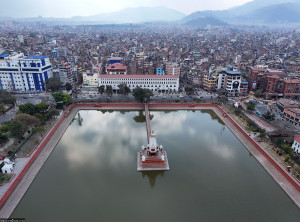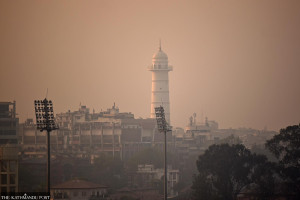Books
Unveiling the layers of garment industry
Mallika Shakya’s ‘Death of an Industry’ navigates the complexities of garment manufacturing, striking a balance between an insightful exploration of cultural politics and a dense presentation of details.
Manushree Mahat
As someone with limited knowledge of economics and anthropology, Mallika Shakya’s ‘Death of an Industry’ was a challenging book for me. However, understanding the complex interplay of economics, caste, ethnicity, and politics was tough, but the book, a vast ethnographic study, proved rewarding. It sheds light on the factors behind the decline of Nepal’s garment industry, addressing the struggles of factory workers, the impact of international politics, the country’s challenges in adapting to change, and the consequences of the industry’s breakdown due to factors like caste dynamics and the people’s war.
Shakya outlines the story of her ethnographic study by delving into Nepal's history. She traces the evolution of industrialisation in Nepal, starting with the first wave during the Rana regime, marked by the Rana-Marwari alliance. The second wave occurred during the Panchayat movement, favouring the ruling caste, while the third wave integrated international trade but still favoured the Bahun and Chhetri ruling class. Shakya keenly examines ethnic politics, highlighting instances of bias among elites in the garment industry, exemplified by the executives and president of Garment Association Nepal (GAN) being exclusively from the Chhetri, Bahuns and Marwari communities.
Additionally, Shakya points out that trade unions such as the Nepal Trade Union Congress (NTUC) and the General Federation of Nepali Trade Unions (GEFONT) were also largely controlled by elite castes, limiting opportunities for Janjatis, Madhesis and Newas to have their representatives and ideas considered in these unions.
The author also highlights the impact of international politics, particularly with the US, on the rise and fall of Nepal's Garment Industry. The Multifiber Arrangement (MFA), a trade agreement seeking to boost exports from third-world countries like Nepal to the US, played a pivotal role in the industry’s significant growth. However, it faced a sharp decline soon after the MFA expired. She further elaborates on the government and ministry officials' inability to manage the ensuing pressure, as they failed to secure a bill that would have guaranteed duty-free access for Nepali garments.
Shakya, who worked in the factories for her shop floor research, documents the day-to-day life and hierarchy among the factory workers—these factors directly influence their earnings. Her firsthand experience is evident in her field research, detailing the various roles assigned to workers, such as ‘thread-removers’, ‘matchers’ and ‘quality checkers’. This provides great insights into the life and work of garment industry workers, illustrating the thorough checks garments undergo before being dispatched.
The challenges faced by workers during and after the garment industry’s decline are crucial aspects of Shakya’s research. It is revealed that factories were forewarned about inspections, prompting them to create a façade of a healthy working environment. Consequently, workers had to endure strenuous conditions and health hazards. Her research also covers the hardships faced by workers post-industry collapse, including some taking up jobs as cleaners or security guards, while others had to leave Nepal to find employment abroad. This shows how comprehensive and in-depth her research was.
Shakya’s case studies on individual factory owners offer insights into both the internal operations of the factories and the broader distinction between ‘mass’ manufacturers and ‘craft manufacturers’. She highlights the value placed by craft manufacturers on quality and skills in their culturally rooted garments. While such craft manufacturers are scarce in Nepal, they hold significant potential for creating distinctive garments in the global market. An example is Chhote from A&E Boutique, a craft manufacturer whose successful business crumbles with the garment industry. Conversely, mass manufacturers are represented through Sameer and Navin of Arya-Nepal, a garment industry that also collapses, prompting Navin to leave Nepal entirely.
In a concise 150-page book, Shakya explains the intricate systems and politics that led to significant changes in economies and people’s lives. Grounded in thorough research, ‘Death of an Industry’ is essential reading to comprehend the intricate cultural, economic, international and ethnic factors involved in the decline of industrialisation.
Death of an Industry: The Cultural Politics of Garment Manufacturing during the Maoist Revolution in Nepal
Author: Mallika Shakya
Year: 2018
Publication: Cambridge University Press




 26.78°C Kathmandu
26.78°C Kathmandu















